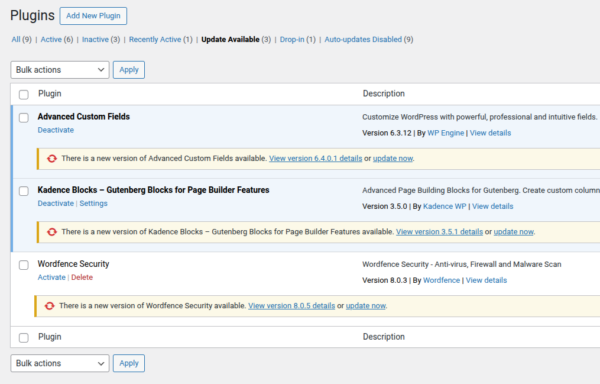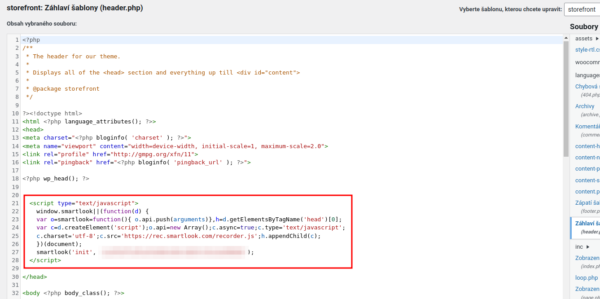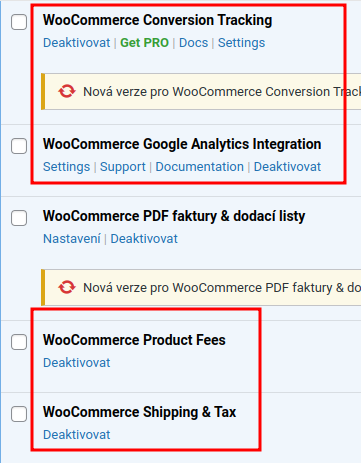I was contacted by a lady from a company with a request to make some minor changes to their e-shop. It cost several hundred thousand Czech crowns, but some basic things don’t work.
Today, I don’t want to deal with how to manage a contract, or how to verify that a contractor has actually done what they were supposed to do, or how to spot poor quality work. We’ll take a look at that some other time.
Table of Contents
How to actually recognize a broken e-shop
It’s actually simple: it doesn’t sell. Orders are rather random, if I evaluate the traffic statistics, they are low numbers, the responsible person (owner, shop manager) can see at a glance that the e-shop is not working as it should.
Poor functionality is visible even to the layman’s eye at a glance and is of course linked to successful business performance. That is to say, the money jingling in the account is conditional on the good functionality of the app itself. As a shopper, you can easily check whether the e-shop is in good shape:
- When you click the Add to Cart button, it does not take four seconds or more to add to cart.
- The product listings are not confusing and unclear.
- Filtering and paging of products according to activated criteria and parameters is functional.
- Payment and transport methods are not duplicated, they are realistic and logical.
- Browsing through the e-shop shows no errors and is quick, ideally even on a mobile phone.
These are the accompanying phenomena of a properly set up e-shop. Or, to put it another way, this is what a dysfunctional e-shop looks like.
The e-shop that I got for a partial repair had these symptoms. Looking into the administration unfortunately revealed other (supposed) problems, by which I mean a jumble of various plugins, many inactive, the vast majority not updated.

Multiple plugins for one feature that were not set up correctly and conflicting with each other in different ways. As an added disadvantage, it was still necessary to reckon with the fact that someone had modified the Storefront template, which could not be easily updated. I applaud the fact that at least the code is pretty clean and uses hooks, so it will be easy to port. Too bad the author didn’t put it straight into a plugin, the webmaster could have updated in peace… this way her site is jammed.

How to fix and stabilize an e-shop

First, you need to describe the current state and take screenshots of screens that are not working properly, such as the cash register. I take for granted saving a report from Site Health, which lists plugins and hosting configuration.
One of the first steps I would take is to review the plugins. I wrote about it in the newsletter some time ago. In a nutshell, it’s about making sure that only plugins that are a) functional, b) properly licensed, and c) used in a meaningful way remain on the site. See image – I would definitely investigate whether they are all needed.
Along with the plugin revision I also check the hosting settings, which nowadays means PHP version 8.2 or 8.3 and enough memory for WooCommerce (256 MB is the minimum!).
This will show if all plugins support this version of PHP. It can easily happen that errors related to the migration to a new PHP version will occur. These should be resolved, for example by communicating with the author of the plugin. I also assume that you are preparing everything on a working copy of the site.
I personally do not support technical debt, i.e. various regressive elements that hinder development. I always try to prepare the site to be progressive – i.e. ready for future innovations. This will save me a lot of work in the future.
Next, it’s a good idea to map out what features are in the template. Unfortunately, if someone has modified a single site template, then it will be necessary to identify and allocate these changes to a plugin or child template (I wrote about this in the last newsletter).
Once you’ve isolated those changes, which is obviously more of a programming job, insert them into a child template, even if you don’t need it at first glance. You can have that second look a year from now and you’ll be glad you have a child template up and running.

In the process of finding customized code, don’t forget about snippet managers, i.e. plugins where different parts of the code are stored. This too should go into child templates or custom plugins (again, see last newsletter).
- Once you have your hosting set up correctly,
- revised and updated plugins that work without errors (check the logs),
- a functional updated and ideally subordinate template,
E-shop setup
Then you can work on reviewing your WooCommerce settings and all related plugins. It’s not just about direct setup, but also about checking the processes that run through the store. There you have it:
- Proper setup of payment methods, including payment gateway and order status marking.
- Shipping methods for different types of products, postage, packing and other charges.
- Ropes, crampons and pickaxes.
- Interfacing with accounting or economic software, i.e. order processing by accountants.
- Credit system, rewards, virtual packages, discount coupons, marketing discounts and other enticements for future clients – you have to account for them, communicate them to customers, bill them, record the performance, etc.
- Different amounts of VAT taxes, their change over time, sales to other countries (to avoid double taxation), working with the euro and currency exchange rates…
There are many more different processes and resulting situations, running an e-shop is no fun, so it’s good to know exactly what we’re doing when adjusting the settings. The risk of damage is quite high. It certainly can’t be handled by one person – at the very least the owner must supply the specifications, and it’s also a good idea to establish controls and testing, for example, well-intentioned spam protection can effectively cancel or damage the entire ordering process.
Sending and delivering emails, whether transactional, marketing or regular informational, is also a big topic. And that brings us to the topic of data processing, which in my experience most e-shoppers pretty much ignore.
On top of all the activities is the proper setup of measurement codes to keep the analysts busy. Nowadays it only makes sense to use GTM for your e-commerce store, don’t leave plugins to run different tools like SiteKit or WooCommerce Google Analytics Integration. It will be very laborious for you to comply with all the consent management requirements, especially if you run ads on different networks (Google, Facebook, remarketing or retargeting) for your e-shop – everything will be easier if you run it all from GTM based on the consents granted.
As an e-shop administrator, we are at least a little bit responsible for these things, more than that. It is difficult to explain that the error or complication was not caused by our intervention. That’s why it’s a good idea to document your actions before and after the changes, both visually-that is, making a video or creating a screenshot-and factually, that is, using a log with timestamps. If any unwanted changes occur, we are the ones who should document how it happened, why it happened, and how we will prevent it from happening again.
We’re having a hard time. But we’re having fun, right?
